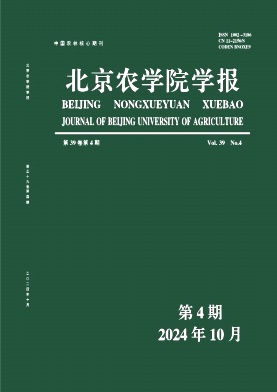Effect of Various Nitrogen Fertilizers and Their Levels on Big-Arch Shelter Cucumber Yield and Water Use Efficiency
引用次数: 3
Abstract
Vegetables are mainly cultivated through facility in early spring and late autumn in Northern of China. In the case of a serious shortage of water resources, water use efficiency of greenhouse vegetable is of an important scientific significance in both water and fertilizer management. On the basis of pan Evaporation (Ep) and real-time monitoring of soil moisture content, the amount of water irrigation adequate to big-arch shelter cucumber growth, water dissipation, yield and water use efficiency were determined through the combination of three nitrogen fertilizers including urea, urea containing nitrification inhibitors (5:1 with urea and nitrification inhibitor) and coated urea (slow fertilizer) and their various levels with 0 kg/ha, 350 kg/ha, 550 kg/ha, 750 kg/ha. The results showed that the most 10,9000 kg/ha production was gained by the treatment of 550 kg/ha urea containing inhibitors, which could increase 41.5% of a yield, 15.2% of a cumulative water consumption that was at 462.0mm and 44.7% of a water use efficiency that is at 14.11kg (dry matter)/(mmha), compared with that of control, respectively. In conclusion, the present study demonstrates that the application of moderate levels of urea containing nitrification inhibitor in greenhouse cucumber can gain higher yields and water use efficiency.不同氮肥及施量对大棚黄瓜产量及水分利用效率的影响
在中国北方,蔬菜主要在早春和晚秋通过设施种植。在水资源严重短缺的情况下,温室蔬菜水分利用效率在水肥管理中都具有重要的科学意义。在蒸发皿蒸发量(Ep)和土壤含水量实时监测的基础上,通过尿素、含硝化抑制剂尿素(与尿素和硝化抑制剂的比例为5:1)和包膜尿素(慢效肥)3种氮肥的配施,以及0 kg/ha、350 kg/ha、550 kg/ha、750 kg/ha的不同施氮量,确定了适合大棚黄瓜生长的灌水量、耗水量、产量和水分利用效率。结果表明,与对照相比,施用550 kg/ha含尿素抑制剂可获得10、9000 kg/ha的最高产量,产量提高41.5%,累计耗水量(462.0mm)提高15.2%,水分利用效率(14.11kg(干物质)/(mmha)提高44.7%。综上所述,在温室黄瓜上施用适量含硝化抑制剂尿素可获得较高的产量和水分利用效率。
本文章由计算机程序翻译,如有差异,请以英文原文为准。
求助全文
约1分钟内获得全文
求助全文

 求助内容:
求助内容: 应助结果提醒方式:
应助结果提醒方式:


